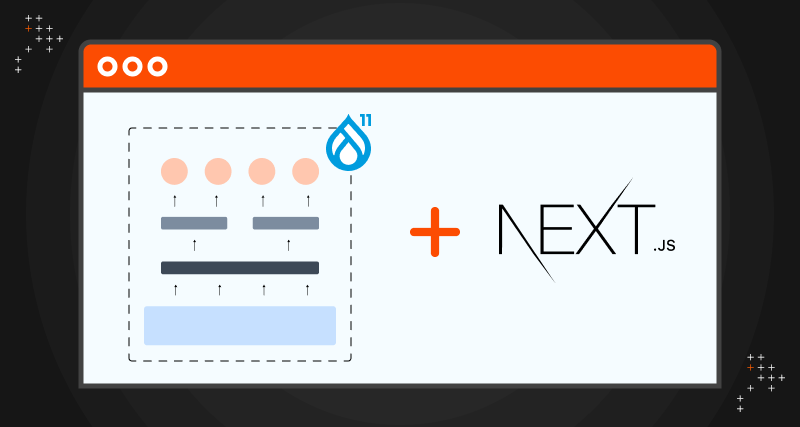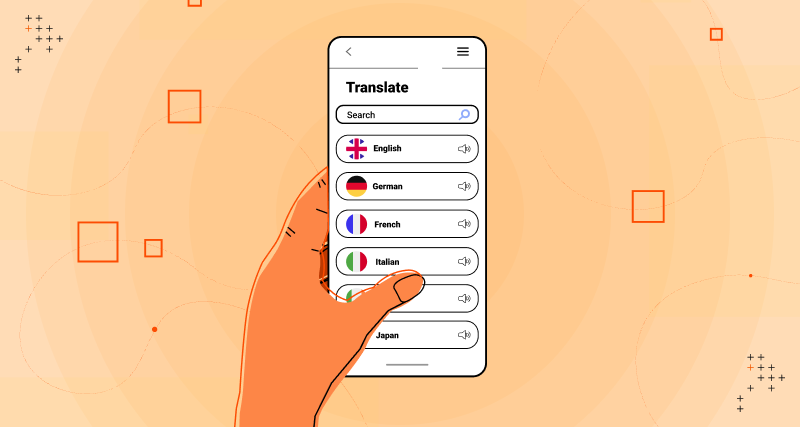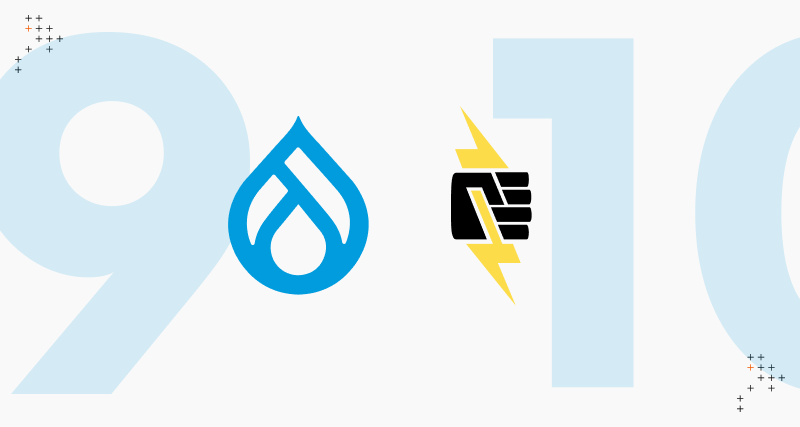Introduction
Enterprises managing a multitude of websites grapple with a paradox: how to consistently deliver unique, engaging experiences across multiple brands and regions without losing centralized governance. Traditional digital architectures, bound by monolithic systems and inflexible frameworks, often fall short, resulting in duplicated efforts, inconsistent user journeys, and hindered scalability.
The answer lies in composable MACH (Microservices, API-first, Cloud-native, Headless) architecture, an evolutionary shift that redefines digital experience management. By strategically decoupling Drupal 11 as a headless CMS and integrating Next.js for dynamic frontend experiences, organizations can harness unprecedented flexibility, scalability, and performance. This transformative approach not only resolves the complexities inherent in multi-site management but positions enterprises at the forefront of digital innovation, ready to meet evolving customer expectations with agility and precision.
The Multi-Site Challenge for Enterprises
For enterprise IT and marketing teams, managing multiple websites brings familiar challenges. Traditional Drupal multisite (multiple sites on one installation) was one solution, but it introduced complexity in maintenance and limited flexibility.
Each brand site demands its own look, feel, and custom features, yet central teams crave consistent governance, unified data, and efficiency. The siloed site builds or separate CMS instances lead to duplicated effort and inconsistent content. In short, enterprises need a way to support unique brand experiences per site while maintaining a single source of truth for content and user management. Decoupling the front end from the back end is a game-changer here.
By using Drupal 11 purely as a robust content repository and Next.js for each site’s UI, organizations can write content once and deliver it to any number of sites. Drupal’s built-in strengths (content modeling, roles/permissions, taxonomy for content categorization) remain in play, but all output is delivered via APIs. This means no more one-size-fits-all front-end; each site can consume the content and present it in a brand-specific way. The result is a multi-site setup that strikes a balance between consistency and autonomy, featuring central content with local presentation.
Embracing MACH Architecture
To fully unlock this multi-site strategy, enterprises are turning to MACH architecture principles: Microservices, API-first, Cloud-native, and Headless. Embracing MACH means your digital platform is composed of interchangeable, best-of-breed components rather than a single monolithic system. Here’s what that means in context:
- Microservices: Instead of a monolith doing everything, functionality is distributed across services. For example, Drupal 11 serves as a dedicated content microservice (content repository), Next.js applications handle presentation per site, and other concerns (search, forms, e-commerce, etc.) can be separate services. This modularity allows you to add or swap components as needed without overhauling the entire system.
- API-First: All interactions happen via APIs. Drupal’s content is exposed through JSON:API or GraphQL endpoints, making it easy for any front-end (website, mobile app, kiosk, etc.) to consume content. This ensures omnichannel readiness as your content isn’t tied to a specific website; it can be reused across all channels.
- Cloud-Native: The platform is built to scale on cloud infrastructure. Decoupling naturally supports this as you can host Drupal in a containerized cloud environment and deploy Next.js front-ends globally on edge networks or serverless platforms. In fact, decoupled Next.js sites are often deployed on modern hostings like Vercel or Netlify for an instant global scale. Each component can auto-scale and update independently, enabling high agility and resilience.
- Headless: The front-end “head” is removed from the CMS. Drupal 11 runs headless, managing content and users without rendering HTML for end-users. Next.js takes over rendering, which means front-end developers can create rich, dynamic user experiences using the latest web technologies, all while Drupal securely feeds them content via API. Headless Drupal simultaneously delivers content to multiple Next.js sites, embodying the “publish everywhere” ideal.
By aligning your multi-site architecture with MACH, you get a future-proof foundation. Integrating new services, whether a personalization engine or a new analytics tool, is easier because everything speaks via APIs. You also avoid vendor lock-in – each piece can be replaced if a better option comes along without rebuilding the entire stack.
Drupal 11 + Next.js: A Modern Multi-Site Powerhouse
Drupal 11 is an enterprise-grade CMS known for its flexibility and robust content modeling. Next.js is a powerful React-based framework for building fast, user-friendly web front-ends. Together in a headless configuration, they form a multi-site powerhouse.
Using the open-source Next-Drupal, organizations can bind these two technologies seamlessly. In fact, “Next.js for Drupal has everything you need to build a next-generation front-end for your Drupal site,” including out-of-the-box support for multi-site scenarios.
The Next-Drupal project enables a single Drupal instance to serve content to any number of Next.js applications. Editors can create and push content to numerous Next.js sites from one Drupal installation, all while maintaining Drupal’s granular permissions and workflows.
How does it work? Drupal exposes content via JSON:API (or GraphQL), and each Next.js site fetches the content it needs. You could have, for example, a leading corporate site, several product microsites, and a customer community site, each with built-in Next.js having its own routing and design, all drawing from the same Drupal 11 content repository. The Next-Drupal integration provides the tooling to make this efficient, including a unified content preview system and even multi-site content filtering.
From a strategic perspective, this setup enables front-end innovation and back-end stability to occur in parallel. Developers can work on the Next.js front-end for one site without affecting others, as long as the content API contracts are stable. Meanwhile, content editors work in Drupal’s familiar interface, managing all sites from a single location. It’s a best-of-both-worlds scenario: the stability, security, and editorial UX of Drupal paired with the performance and flexibility of a modern front-end stack.

Drupal 11 also supports AI-assisted content generation and translation directly within its editing interface. This AI integration enhances editorial productivity, allowing teams to work faster and smarter while maintaining content quality across multilingual, multi-brand environments.
A Real-World Example: From Complex Requirements to Composable Solution
When a leading European education consortium approached us, their digital infrastructure was fragmented across multiple platforms, WordPress, Django, and legacy CMSs. Each of their seven specialized training brands had developed in isolation, leading to inconsistent branding, duplicated content, and inefficient editorial processes.
They envisioned something transformative: a shared platform that could power each brand's unique experience while centralizing content and operations. Their wish list was bold:
- Distinct websites for each brand
- Support for B2C and B2B e-commerce
- AI-powered features
- Multilingual content
- Seamless integrations with CRM and analytics tools
- The ability to scale effortlessly.

Our response was a composable, MACH-aligned architecture built on Drupal 11 and Next.js. We proposed using Drupal 11 as the headless CMS, a centralized content hub capable of multi-brand workflows, commerce, and editorial control. Each brand site would be built in Next.js, delivering high-performance front-ends tailored to brand identities while consuming content from Drupal through robust APIs.
To bring this to life:
- Next-Drupal was used for instant content previews, multilingual support, and streamlined content delivery.
- Drupal Commerce was configured for dynamic pricing, corporate billing, and secure checkouts.
- Portals were created for learners, B2B buyers, and training coordinators with personalized dashboards and course histories.
- APIs connected the platform to HubSpot, payment gateways, Google Analytics, and OpenAI for chatbot assistance and real-time translation.

The solution struck the balance they needed:
- Centralized governance with localized flexibility.
- Editors could manage all sites from a single Drupal instance.
- Developers could independently evolve front-end features.
- Marketers could launch landing pages instantly
- Learners could find, book, and complete courses without friction.
With a modular, cloud-native architecture optimized for performance and scalability, the platform wasn't just a fit for their current needs, it became the foundation for their digital evolution.
How Axelerant Helped IDMC Migrate From A Monolithic To Decoupled Digital Experience Platform
The Internal Displacement Monitoring Centre (IDMC) has been a crucial source of data and insights on internal displacement. IDMC was struggling with an outdated website characterized by poor design, complex navigation, and limited search functionality.
Axelerant helped IDMC understand its requirements and deploy a modern decoupled website using Drupal 10 and Gatsby. The new website allowed IDMC to modernize their platform, enhance performance, and improve security by separating the frontend and backend.
The new setup also provided IDMC with a flexible and scalable content management system, better search functionality, and an overall improved user experience. This helped the organization achieve a 49% increase in SEO performance, enhancing visibility.
IDMC’s website performance also increased by 38%, ensuring better responsiveness.
Ready to Embrace Headless Multi‑Site?
With Drupal 11 and Next.js, enterprises can now:
- Deliver unique experiences per brand without duplicating effort
- Unify content governance while enabling local customization
- Achieve SEO, performance, and scalability targets
- Integrate seamlessly with future systems using APIs
As the Next-Drupal project proclaims, "Everything you expect from Drupal. On a modern stack."
For digital leaders, now is the time to move beyond outdated CMS strategies. Embrace MACH. Build composable platforms. Let Drupal 11 and Next.js transform your digital ecosystem, site by site, brand by brand.
Ready to take the leap? Let’s build your scalable, future-proof, multi-site digital platform together.

Prateek Jain, Director, Digital Experience Services
Offline, if he's not spending time with his daughter he's either on the field playing cricket or in a chair with a good book.

Swarad Mokal, Technical Program Manager
Big time Manchester United fan, avid gamer, web series binge watcher, and handy auto mechanic.

Roshni Upadhyay, Senior Software Engineer
Roshni is the kind of person who’ll show up with snacks, support, and a smile. Joyful, grounded, and always willing to lend a hand, she’s all about making moments—big or small—meaningful.
%20copy.png)
Sayan Mallick, Marketing Assistant
A former professional e-sports player, passionate about anime and technology—that’s Sayan. He is an eccentric explorer who likes to read, play games, teach, and spend time with his pet dog, Buddy.

 We respect your privacy. Your information is safe.
We respect your privacy. Your information is safe.



Leave us a comment